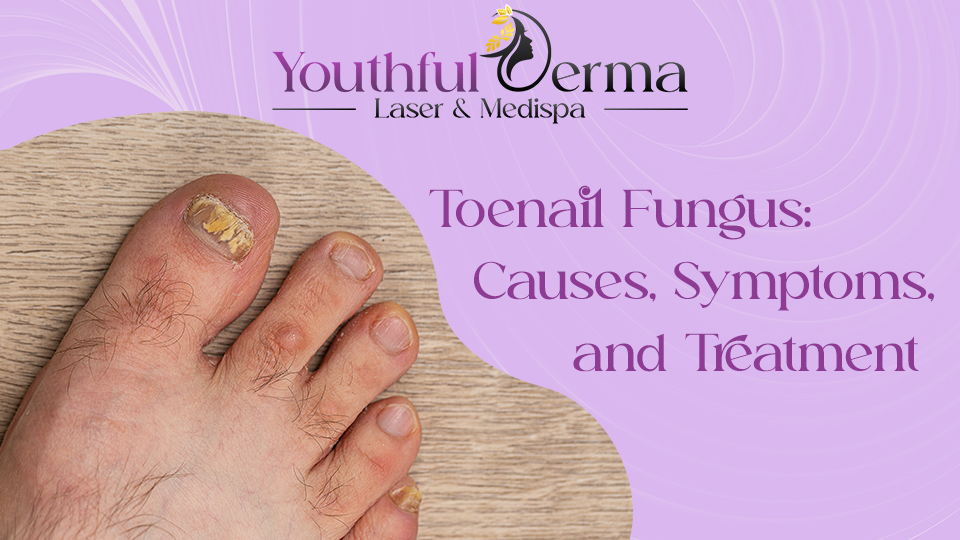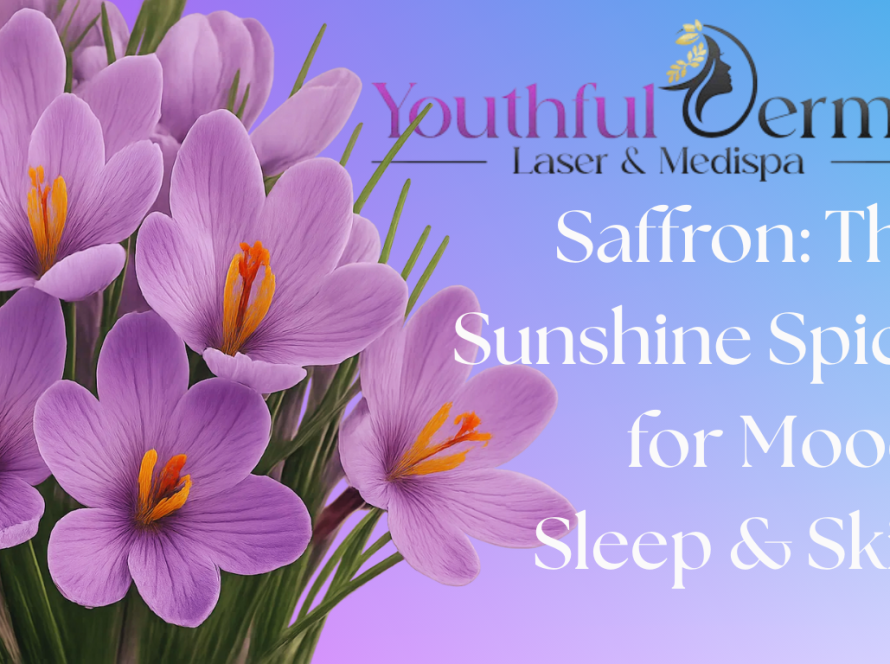Toenail Fungus: Causes, Symptoms, and Treatment
Toenail fungus, also called onychomycosis, is a common condition that affects the appearance and health of the nails. It begins as a small white or yellow spot under the nail and can gradually spread deeper, causing discoloration, thickening, and brittleness. Though often painless, toenail fungus can be both uncomfortable and aesthetically distressing especially for those who value well-groomed, healthy nails.

Causes of Toenail Fungus
Toenail fungus develops when fungal organisms (dermatophytes) infect the nail bed. These fungi thrive in warm, damp environments, making locker rooms, swimming pools, and enclosed shoes ideal breeding grounds.
Common causes and risk factors include:
- Walking barefoot in public showers, gyms, or spas
- Wearing tight or non-breathable shoes
- Nail trauma or damage during pedicures
- Excessive sweating (hyperhidrosis)
- Weakened immune system
- Conditions such as diabetes or poor circulation
Because fungal infections spread easily, early prevention and prompt treatment are essential to avoid persistent or recurring infections.
Symptoms of Toenail Fungus
Toenail fungus can affect one or multiple nails and often develops slowly. Common symptoms include:
- Thickened nails that are hard to trim
- Yellow, brown, or white discoloration
- Brittle or crumbly nail texture
- Distorted or uneven nail shape
- Foul odor or mild pain under the nail
In more advanced cases, the nail may detach from the nail bed, causing discomfort and increased risk of bacterial infection.
Professional Treatments for Toenail Fungus
Modern aesthetic and medical practices offer safe and effective treatments to clear fungal infections and improve nail appearance.
1. Laser Toenail Fungus Treatment
Laser therapy is one of the most effective methods available today. It uses focused laser light to target and destroy fungal cells beneath the nail surface without damaging surrounding tissue
Benefits include:
- Non-invasive, painless procedure
- No downtime
- Stimulates healthy nail growth
- Suitable for most skin and nail types
Multiple sessions may be required depending on the severity of the infection.
2. Medical-Grade Topical Treatments
For mild infections or maintenance after laser sessions, medical professionals often prescribe topical antifungal solutions or medicated nail lacquers. These penetrate the nail and eliminate lingering fungal organisms over time
Regular nail trimming and cleansing before application improve absorption and results.
3. Oral Antifungal Medications
In severe or recurring cases, a dermatologist may recommend oral antifungal medications such as terbinafine or itraconazole. These work internally to clear the infection from the inside out, but are typically prescribed after medical evaluation to monitor any potential side effects.
4. Preventive Nail Care and Maintenance
In aesthetic care, prevention is equally important. Professional guidance on nail hygiene, periodic medical pedicures, and use of sterile instruments help maintain healthy nails long-term.
To complement professional treatment and avoid reinfection, follow these steps:
- Wash and dry feet thoroughly, especially between toes.
- Wear breathable socks and shoes to reduce moisture buildup.
- Disinfect nail tools and avoid sharing them.
- Always wear slippers or flip-flops in public showers or spas.
- Replace old footwear that may contain fungal spores.
- Schedule regular nail health check-ups at a certified medspa or clinic.
Conclusion
Toenail fungus is a common but treatable condition. With modern laser and medical treatments available at aesthetic and medspa clinics, it’s now possible to clear the infection effectively while restoring the nails’ natural appearance.
Combining professional care with good hygiene practices ensures long-lasting, healthy, and beautiful nails helping you step forward with confidence.
47 Lakeshore Rd E, Unit 100 Mississauga ON, L5G 1C9
3281 Aubrey Rd, Mississauga, ON L5L 5C9, Canada



